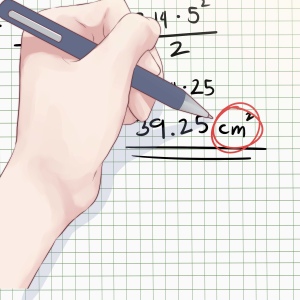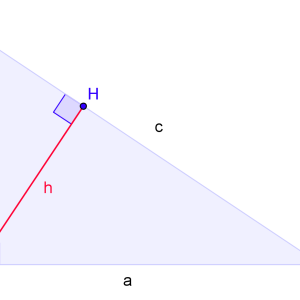All tasks in which there is a movement of objects, their movement or rotation, one way or another are associated with speed.
This term characterizes the movement of an object in space for a certain period of time - the number of distance units per unit of time. It is a frequent "guest" as sections of mathematics and physics. The source body can change its location both evenly and with acceleration. In the first case, the speed of the speed is static and does not change during the movement, in the second, on the contrary, it increases or decreases.
How to find speed - uniform movement
If the velocity of the body remains unchanged from the beginning of moving until the end of the path, then we are talking about moving with constant acceleration - uniform motion. It can be straightforward or curvilinear. In the first case, the trajectory of the movement of the body is straight.
Then v \u003d S / T, where:
- V - the desired speed
- S - distance traveled (shared way),
- t - the total time of movement.
How to find speed - acceleration constantly
If the object moved to acceleration, then its speed as it changed. In this case, the expression will help to find the desired value:
V \u003d V (NCH) + AT, where:
- V (beginning) - the initial speed of the object,
- a - acceleration of the body
- t - Total travel time.
How to find speed - uneven movement
In this case, there is a situation where different parts of the path of the body took place over different times.
S (1) - for t (1)
S (2) - for T (2), etc.
In the first section, the movement took place in the "Tempe" V (1), on the second - V (2), etc.
To find out the speed of moving the object on the entire path (its average value) use the expression:
V \u003d (S (1) + S (2)) / (t (1) + t (2)).
How to find speed - rotation of an object
In case it is the rotation of the angular velocity, which determines the angle of rotation of the element per unit time. Designate the desired value of the symbol ω (rad / s).
- ω \u003d Δφ / Δt, where:
Δφ - traversed angle (angle increment)
.DELTA.t - elapsed time (while driving - time increment).
- If the rotation is uniform, the target value (ω) associated with such a concept as the rotation period - the time it takes our object will make one complete revolution. In this case:
ω \u003d 2π / T, where:
π - constant ≈3,14,
T - period.
Or ω \u003d 2πn, where:
π - constant ≈3,14,
n - the frequency of revolution.
- With the known linear velocity of the object each point on the path of movement and radius of the circle along which it moves, for finding the speed ω require the following expression:
ω \u003d V / R, where:
V - the numerical value of the vector value (linear speed),
R - the radius of the trajectory of the body following.

How to find speed - approach and distant points
The problems of this kind would be appropriate to use the terms of convergence speed and distancing speed.
If the objects are sent to each other, the approach speed (zoom out) will be as follows:
V (approximated) \u003d V (1) + V (2) where V (1) and V (2) - the speed of the corresponding objects.
If one of the bodies overtakes another, the V (approximated) \u003d V (1) - V (2), V (1) over V (2).
How to find the velocity - the movement of the pond
If the events unfold on the water, by the own speed of the object (body motion relative to water) is added and the rate of flow (i.e. the movement of water relative to the fixed shore). What is the relationship of these concepts?
In case of moving the flow V \u003d V (sobst) + V (tech).
If the upstream - V \u003d V (priv) - V (tech.).




































If you ever ran on distillation, you probably noticed that a false start, you can run the race faster.
The formula: s \u003d (V-v) / t -Wrong! You can not take the speed of the speed! All calculations on S, V, t, F, m is only the average velocity
S \u003d (V + v con zero..): 2 * t. And have values \u200b\u200bof initial and final speeds, since "a" - (acceleration) is ENERGY-F / m. It either is or it is not. Negative it does not happen.
V final \u003d V zero. + At. What kind of idiocy !? at-the average speed. V con. \u003d V nach. + 2at. V Wed. \u003d (V nach. + V nach. + 2at) / 2
S \u003d (2V + 2at) / 2 * t. S \u003d v zero. * T + att.
Note: S "triangle" is the formula att, but not by the formula att / 2, that is quite true! S \u003d at * t !!!
Task:. V \u003d zero to 10 m / s, t \u003d 5 c, a \u003d 2 m / sek.sek. S \u003d?
S \u003d (V + V + 2at) / 2 * t. S \u003d V * t + att. 10 * 5 + 2 * 5 * 5 \u003d 100.
If at * t / 2 -So S \u003d 75 m.
"Total acceleration" - (V 0 * t) and at * t is: 100 \u003d a * 5 * 5. a \u003d 4 m / ss
"Acceleration" - (energy) is with any graph of motion. And with a uniform movement, it is so far there is an average speed. at.
"Apple drops .." Decide at speeds: (t \u003d 1c)
V beginning \u003d 0 -
V Average (AT) \u003d 4.9..m / s at \u003d 4.9 A \u003d 4.9 m / s.
V ultimate (2at) \u003d 9.8..m / s 2at \u003d 9.8 a \u003d 4.9 m / s.sek
S \u003d V Average * T \u003d AT * T \u003d 4.9 * 1 \u003d 4.9 m.
S \u003d (0 + 2AT) / 2 * T (0 + 9.8) / 2 * 1 \u003d 4.9 m.
"Acceleration" must be found from the average speed AT
"V Middle (AT) cannot be divided into 2. at" Apple .. "AT / 2 \u003d 2.45 m / s (?). Formula S \u003d AT / 2 * T. S \u003d 2.45 m (instead of 4.9 m.)
V Fin. (2at) S \u003d (0 + 2AT) / 2 * T S \u003d (0 + 9.8) / 2 * 1 S \u003d 4.9 m.
Problem: VO \u003d 10. a \u003d 3. T \u003d 5. S \u003d? A \u003d? (S \u003d ATT. S \u003d ATT / 2?)
Solution: S \u003d Vot + ATT. 10 * 5 + 3 * 5 * 5.s \u003d 125 m. A \u003d S / TT. a \u003d 5 m / s
Not the right solution: S \u003d VT + ATT / 2. S \u003d 87.5 m. A \u003d 2S / TT. a \u003d 7 m / s
"Free fall on the planet Earth":
If s a falling body is divided into TT, we always get the number \u003d 4.9 .. this is the number and there is a "acceleration with a free fall".
S \u003d A * TT. S \u003d 4.9 * TT. TT \u003d S / 4.9.
4.9 is the force with which the Earth attracts a falling body.
All "Teps" from: Speed \u200b\u200b9.8 .. is the speed of AT, or 2AT?
If AT, then and S \u003d (0 + AT) / 2 * T. S \u003d ATT / 2.
But, if, 9.8 ..- This is the 2AT speed (and it is so !!!), then S \u003d (0 + 2AT) / 2 * T. And it comes out: s \u003d att !!!
S / T \u003d Vsher \u003d AT!
("Turtle and runner" .. :)
Machine and runner. Task. S \u003d 100 m. T \u003d 10 c.
Runner-uniform movement. V \u003d 10 m / s at \u003d 10 m / s
Machine-Zo.-UK. V con. \u003d 20 m / s a \u200b\u200b\u003d 1 m / s
.... After 3 seconds. Runner: S \u003d 10 * 3 \u003d 30m. Machine: 1 * 3 * 3 \u003d 9 m.
5 sec. 10 * 5 \u003d 50m. 1 * 5 * 5 \u003d 25 m.
9 sec. 10 * 9 \u003d 90 m. 1 * 9 * 9 \u003d 81 m.
10 sec. 10 * 10 \u003d 100 m. 1 * 10 * 10 \u003d 100 mu
15 sec. 150 m. Its "A" \u003d 0.66 m / s
The car will take place 225 m. "A" \u003d 1m / ss
in 100 seconds. Runner: 10 * 100 \u003d 1000 m. "A" \u003d 0.0001 m / ss.
The power of the runner is "melting" (f \u003d m * a). And the car: "a" \u003d 1m / ss. S \u003d 10000m.
... "The body has passed the S During T". V beginning. and V finish. \u003d 0. "A" \u003d?.
Solution: "Motion schedule does not matter!" A \u003d S / TT.
If it is a schedule of "apple ..", then V beginning. \u003d 0. V con. \u003d 2at.m
VSR \u003d AT.
If V start. more than 0, then S \u003d Vot + ATT. Less: S \u003d Vot-ATT.
V Finish. \u003d Vo + 2at.
If we know f and m, a \u003d f / m. (S / tt \u003d F / m)
"The force applied to the body, it causes the movement and changes its"
... A bucket of water can hold 10 liters of water.
Full bucket of water weighs 10 kg.Izmereniya DIFFERENT!
1 liter of water \u003d 1 kg. S / TT (VSR / T) \u003d F / M. V Average \u003d at. "A" is the energy of movement. AT average speed. 2AT is the final velocity of a uniformly accelerated (slow) movement, with an initial (final) speed \u003d 0.